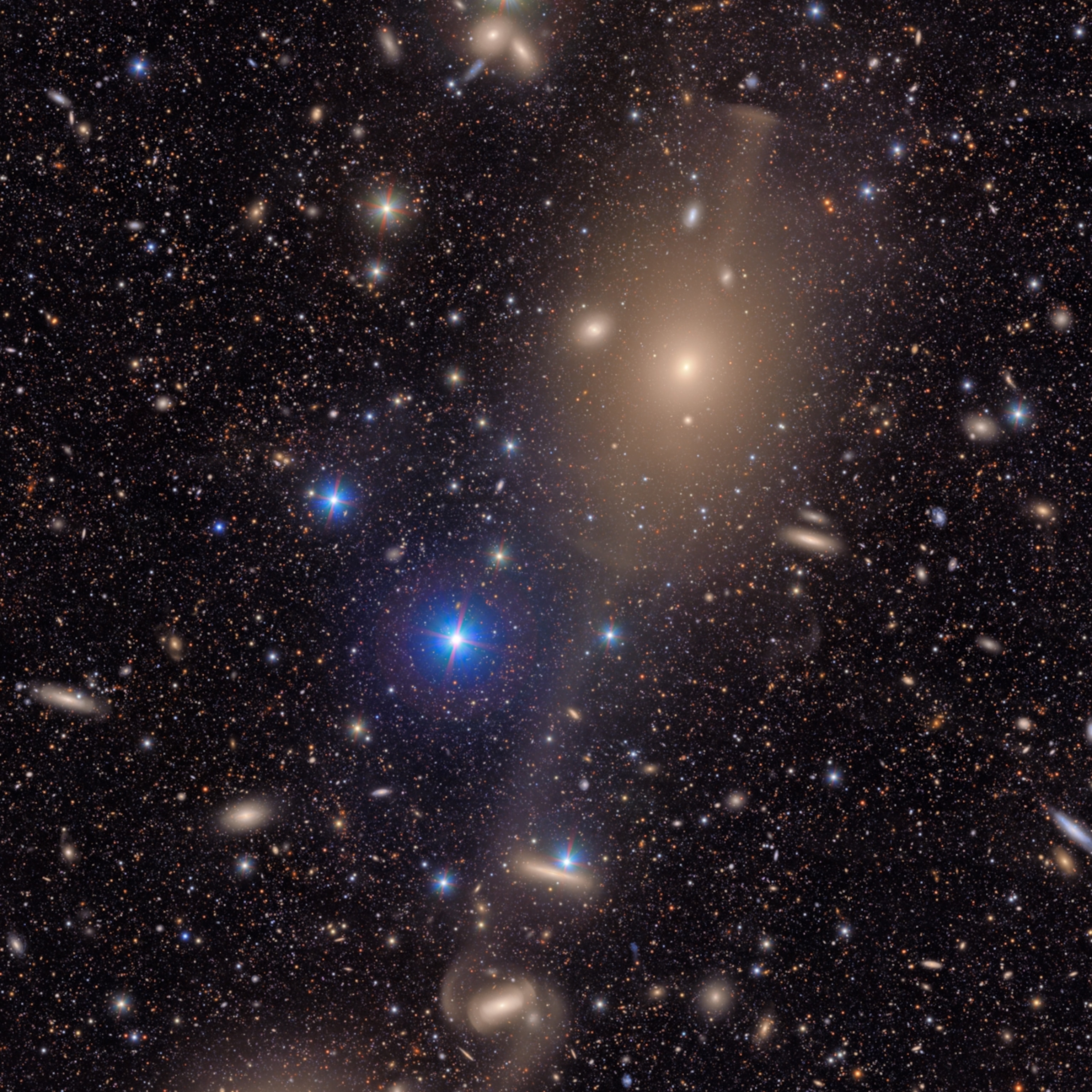
Galaxy in Front of Supernova Creates Cosmic Mirage: Einstein Cross
A galaxy's alignment lets astronomers watch a strange, distant supernova explode. And then watch it again. And again. And again and again.
Far, far away, a galaxy is acting as a cosmic split-screen. Parked in front of an exploding star, the galaxy's gravity is projecting magnified images of the supernova onto the sky—four images, to be precise, in a celestial mirage called an Einstein Cross.
The weirdness doesn't end there, though. Within the next decade, the cosmos will replay that exact same explosion, in a different spot in the sky.
Called a multiply lensed supernova, the strange object was spotted in late 2014 and reported Thursday in Science. And it's still getting brighter. Studying it, and the predicted rerun, will let astronomers combine a few of the things they love: exploding stars, dark matter, and the expanding universe, none of which are particularly well understood.
"You just see the four dots and they form this beautiful Einstein Cross, and it's just kind of spooky," says Daniel Holz, an astrophysicist at the University of Chicago.

Gravitational Lensing
Instead of intergalactic voodoo, the twisted apparitions are the result of a fortuitous cosmic alignment.
Exactly one century ago, in his theory of general relativity, Einstein described how massive objects could tug on light, and even pull at the fabric of space-time. Put simply, strong gravitational fields can act as lenses-warping, magnifying, and redirecting light as it travels through the cosmos. (See another supernova made superbright by gravitational lensing.)
"It's just this incredible verification of general relativity," says study co-author Ryan Foley of the University of Illinois at Urbana-Champaign. (Learn how a NASA gravity probe confirmed two more of Einstein's predictions.)
Depending on the lensing geometry and position of the viewer—in this case, the Hubble Space Telescope—multiple images of the same background object can be produced. Some of those images might even arrive years apart.
Here, one of the galaxies in a massive cluster five billion light-years away is acting as a lens for the dying star. The supernova's four projected images are arranged in a configuration known as an Einstein Cross—but they're not all playing at the same speed, because the light took slightly different paths on its way to Earth. Though a handful of bright, active galaxies have been caught in a cross shape before, this is the first supernova found in perfect quadruplicate.
"They are definitely very unusual," says University of California, Berkeley postdoc Patrick Kelly, who spotted the supernova in images from Hubble. "Probably because no one had found a similar object before, I had not even seriously entertained the possibility of finding multiple images of the same supernova."
Scientists predict this explosion will replay in a completely different part of the cluster sometime in the next decade, but the rerun could air as early as next year. Studying the delay between showtimes will help astronomers gather information about the rate at which the universe is expanding.
Without lensing, the supernova wouldn't have been visible at all—at roughly nine billion light-years away, it would have been too faint. The images taken by Hubble, though, are part of a program designed specifically to look for lensed objects. Through the quirks of their image manipulation, gravitational lenses can reveal information about how dark matter is distributed and how the expansion rate of the universe has changed over time—things that are otherwise pretty tricky to measure.
"We can try to reverse engineer the properties of the gravitational lens," says Robert Kirshner of the Harvard-Smithsonian Center for Astrophysics. "The lens itself is not really the bright stars we can see. The thing that is doing the lensing is the dark matter."
Superweird Supernova
The supernova itself is something of an enigma. Kelly and the team named it after Sjur Refsdal, the Norwegian astrophysicist who first predicted that lensed supernovae could be used to probe cosmic expansion, back in 1964.
Scientists caught it early and have watched as the explosion keeps getting brighter—which it's been doing for the past four months. Normally, supernovae would have peaked in brightness and begun dimming by now, but this one isn't obeying the rules. What's more, the spectrum of light from the explosion doesn't match any of the known types of supernovae. Scientists' best guess right now is that it's a peculiar type of core-collapse supernova, similar to one that went off in 1987 in the Large Magellanic Cloud.
It's also possible that nine billion years ago, stars were following a slightly different set of rules. The younger universe contained fewer metals, scientists say, and the stars grew bigger and died faster. So it's not inconceivable that supernovae behaved differently, too.
"I would not be surprised if this was a little bit different than local examples," Foley says. "One of the big open areas of research is determining exactly what changes with cosmic time or distance."
The team will continue to observe the brightening explosion, and will do its best to catch the rerun from the very beginning. In fact, it's probably not the first time this supernova has lit up the cosmic screen: Simulations based on the lensing cluster suggest the star's final act may have already played twice in the past century.
Follow Nadia Drake on Twitter.






